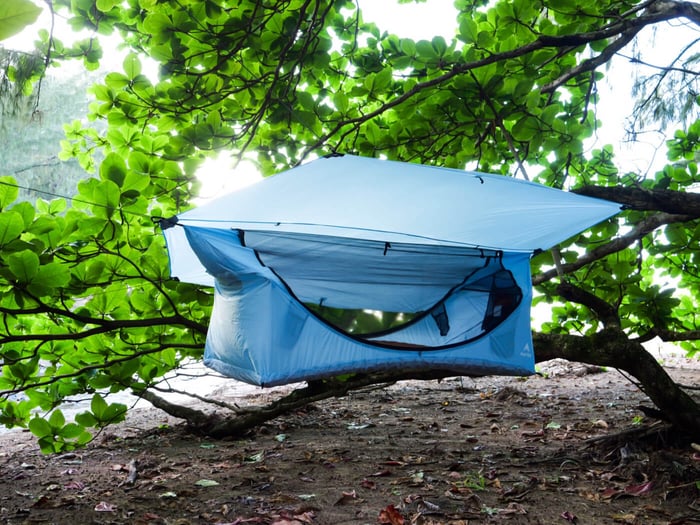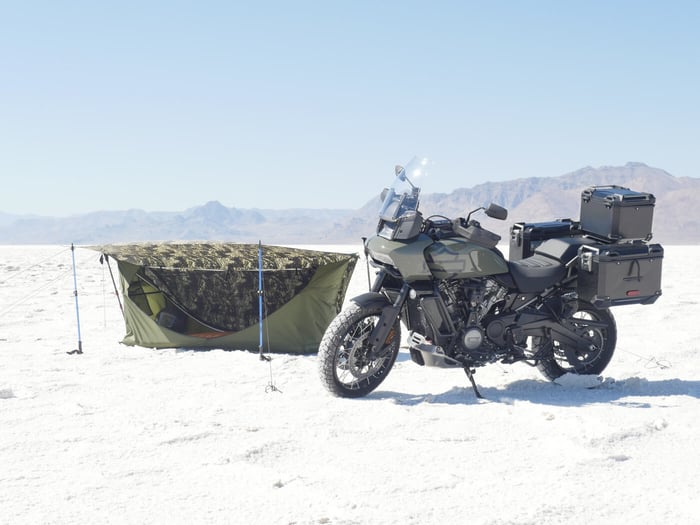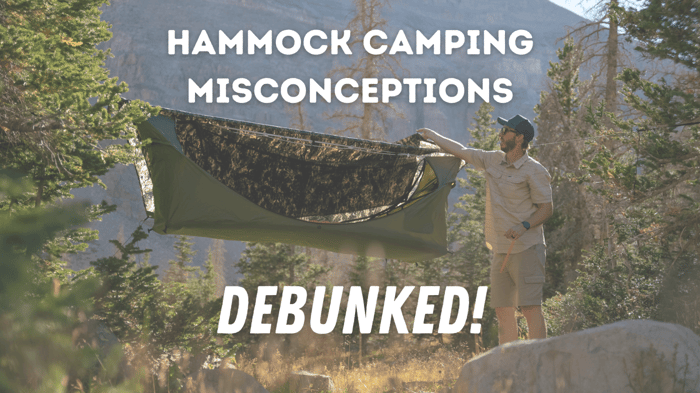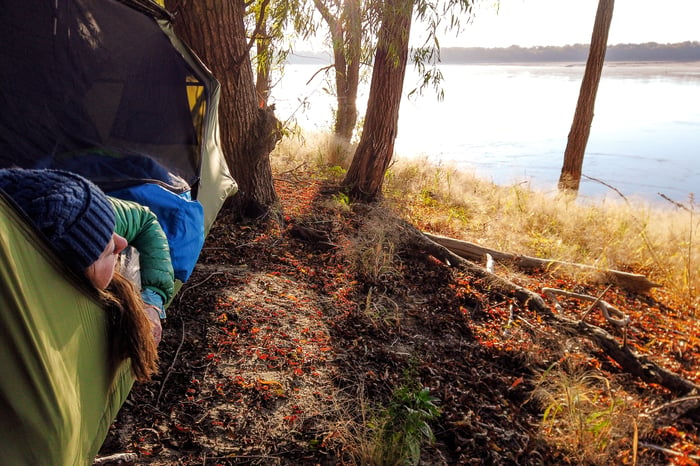CAN YOU USE THE HAVEN TENT FOR BACKPACKING?
The short answer is YES. You absolutely can use the Haven Tent or Haven XL for backpacking. As long as sleep is your priority.
Right from the start, our emphasis has been on sleep quality. The Haven sleep system is the most comfortable way to sleep outside. It may not be the lightest or most compact, but in this post, we’ll share some tips and explain how the Haven Tent will earn its place in your pack.
MY BACKGROUND
Before developing the Haven Tent, I was drifting further and further into a UL (ultralight) obsession. Maybe you're there now... counting ounces and cutting our toothbrush in half. A pound on your feet is worth five on your back and all that.
Over time, my sleep system evolved to a lightweight rainfly, a stretch of paracord, and a thin air mattress. I’d start each hike bragging about my minimal system to anyone who would listen, and probably mention it a few times on the hike as well.
When we got to camp, I’d find a couple of trees or bushes, string my line across, and make my A-frame shelter. I went to bed beaming with ultralight pride and inevitably woke up at 3 am completely miserable. Wind would be whipping through the A-frame, or I had slid off my pad, or the rock in my back was finally winning out. Probably all of the above.
I still loved camping... but thought a miserable night was just par for the course.
A BETTER WAY TO SLEEP OUTSIDE
Frustrated with restless nights, I decided there had to be a better way to sleep in the backcountry.
Traditional tents all have the same sleep experience. You’re on the ground with all of the related issues. Uneven terrain, sliding off the pad, rocks or roots in your back, and crawling in and out on tired knees. Hammocks were never an option for me as I hated the feeling of being wrapped up and bent like a banana. Even asymmetric or bridge hammocks are a far cry from the flat and open sleep experience I get at home.
Rounds of prototyping and trial and error brought me to the Haven Tent you see today. If you want to hear more about the development of the Haven Tent, you can read that here, but this blog post is about whether or not this is a viable system for backpacking. So let’s skip to that!

HAVEN TENT FOR BACKPACKING
When looking at our weights and measurements, the biggest mistake I see is people comparing the weight of our whole system to the weight of their tent or hammock. Our full system includes a hammock, insulated air mattress, bug net, rainfly, tree straps, guy lines, and stakes.
So, you should be comparing the Haven Tent to the weight of your tent and air mattress or your entire hammock kit. (Hammock, underquilt, rainfly, bug net, suspension, and guy lines.) You’ll find when you add it all up, the Haven starts looking better and better.
Even then, we typically end up a pound or two heavier than an expensive ultralight tent and minimal pad. These tents are able to use lighter and more fragile materials because while a tent spans above you, our hammock needs to be strong enough to hold you (and all your stuff) up in the air.
Here is a table showing the weights of the Haven Tent systems:

WAYS TO LIGHTEN THE LOAD
Now that we’re in the game, here are a few things you can do to lighten the load even further. I’ve used each of these steps on my own backpacking adventures.
1) Choose the lighter rainfly - Depending on where you're buying from and the tent model, you may have the option to choose between our standard 70d ripstop nylon rainfly or our lighter 20d ripstop nylon rainfly. If weight is a concern, go for the lighter 20d rainfly. Waterproofing is the same and it is still very durable
2) Leave behind non-essential elements - To further reduce weight, consider leaving behind pieces of the kit that you don't need. For example, instead of using all four guy lines and stakes that come with the kit (weighing 6oz / 166g), you can lock down three corners of the rainfly and use just one guy line for ventilation. The spreader bars, although they increase the internal dimensions of the hammock, do not affect its flat-lay. We recommend upgrading to our Carbon Fiber Spreader Bars which are 45% lighter (3.6 oz for the standard size set or 4.2 oz for the XL/Safari set) than their aluminum counter-parts which come standard with your tent. You can also choose to leave the foot-end spreader bar at home and only bring the head-end bar if necessary. Each Standard aluminum spreader bar weighs 4 oz / 116g while the XL aluminum spreader bars each weigh 5.7oz / 160g. Depending on the tent model and production year, you may also be able to leave behind the bug net, which weighs 6.3oz / 178g for the standard version and 6.8oz / 192g for the XL version.
3) Upgrade to UL carabiners - Upgrading to our ultralight carabiners can further reduce the weight of the system by 2.8oz / 80g.
With these simple hacks, you can reduce the weight of our system and bring it more in line with your target UL weight.

MAKE SLEEP YOUR PRIORITY
The Haven Tent is a comfortable, versatile, and practical sleeping system that is suitable for backpacking. While it may not be the lightest or most compact option, it provides a level of comfort and quality of sleep that traditional tents or hammocks simply cannot touch.
With the right modifications and a little bit of planning, you can easily adjust the weight of the Haven Tent to suit your needs and preferences. So, if you're someone who values a good night's sleep and wants to experience the outdoors in comfort, then the Haven Tent is definitely worth considering for your next backpacking trip.
And the best part... you still get to brag about your sleep system. Just let the snores do the talking Zzz
Derek Tillotson
Haven Tents Founder





